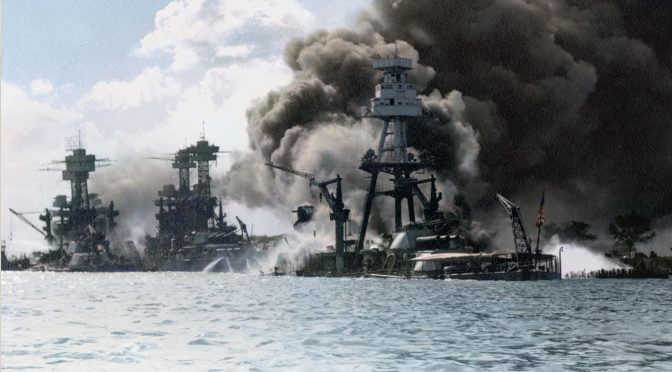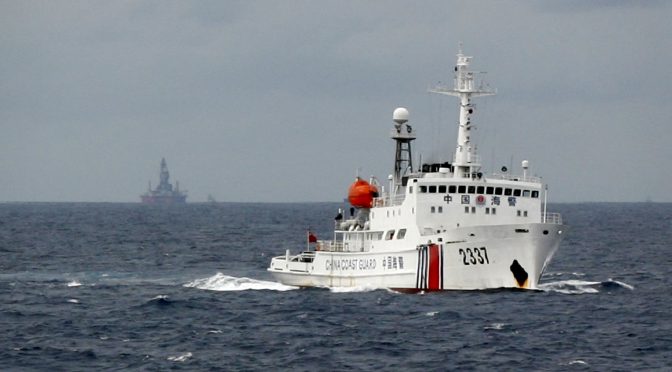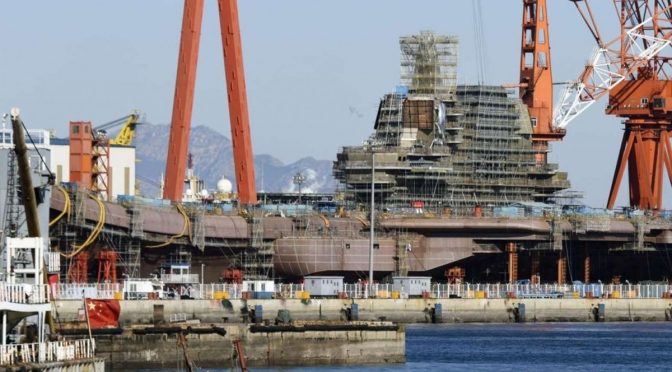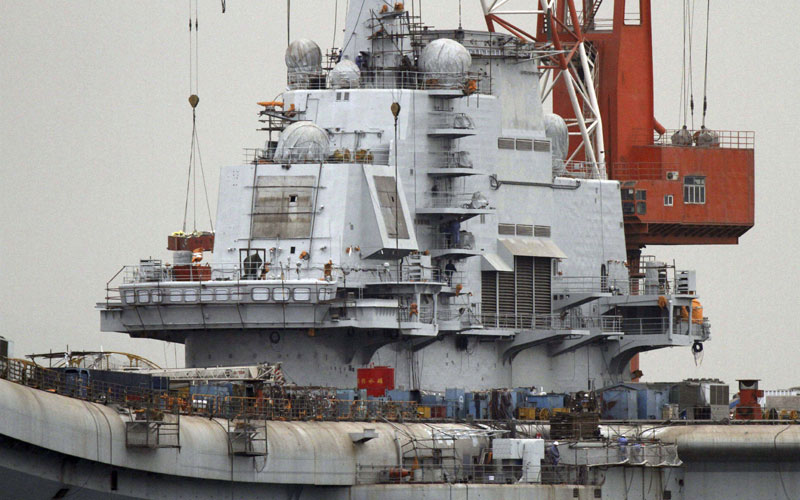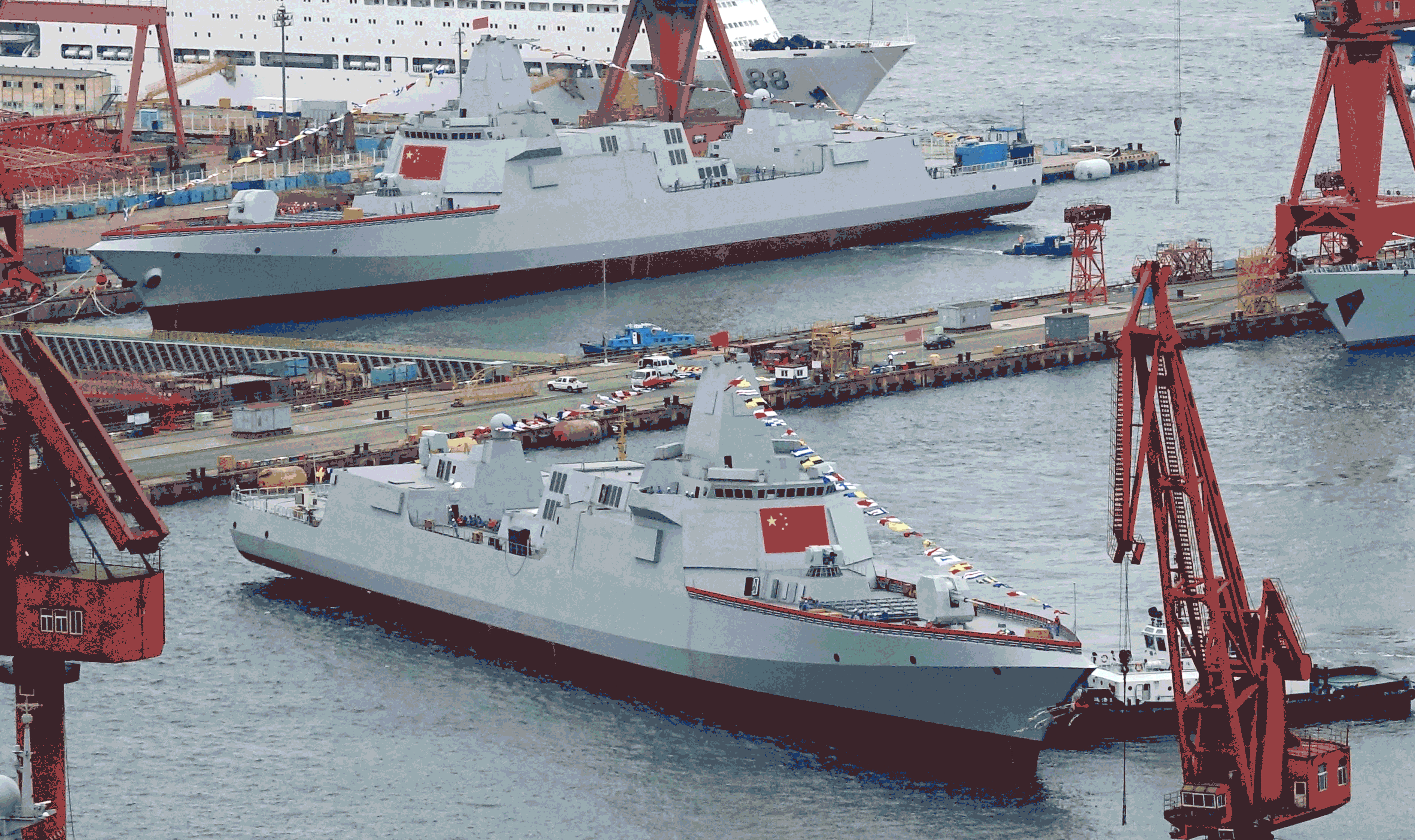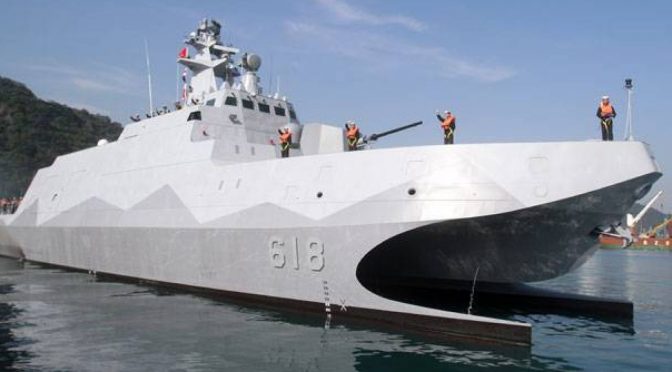This article originally featured in The Foreign Service Journal and is republished with permission. Read it in its original form here.
By Charles Maechling, Jr.
In the summer of 1941, Japan had been at war on the mainland of Asia for four years. After amputating Manchuria from China proper in 1931, and recreating it as Manchukuo under a puppet regime, she had plunged into a full-scale war of conquest with China in 1937. But although a Japanese army of well over a million men occupied vast stretches of the Chinese mainland, active hostilities showed no sign of diminishing. Despite the installation of a puppet regime in Nanking, and a campaign of intimidation and brutal reprisals to pacify the conquered areas, the drain of manpower and supplies continued unabated.
Just as today, Japan was wholly dependent on outside sources for the minerals, petroleum, and other raw materials necessary to fuel its economy, which in 1941 was already highly industrialized. In fact, the whole aim of Japan’s program of expansion on the Asian mainland was to carve out a continental economic system, insulated from the forces which had caused the world-wide economic depression, in which raw materials from China and Southeast Asia would flow into Japan for conversion into a stream of manufactured goods aimed at the limitless Asian market. The conquest of China—or more accurately, her forced conversion into a compliant economic partner—was the first step in a grand design called the Greater East Asian Co-Prosperity Sphere which was ultimately supposed to embrace Indo-China, Malaysia, and the Dutch colonies of Indonesia.
The Achilles’ heel of Japan’s economy—and the greatest drawback to military ambitions—was her energy resources. Despite the fact that civilian gasoline consumption was minimal, and the Japanese armies were largely unmechanized, Japanese oil consumption, including military, had since 1931 climbed steadily from a level—unbelievably low by modern standards—of about 21 million barrels a year to over 32 million barrels in 1941. (Japan’s current annual consumption is about 2 billion barrels.) The most imperative defense need, on which the safety of the island empire depended, was to ensure ample reserve stocks for the large and powerful imperial navy, and it was largely to this end that Japan, at great pains to her strained economy, had accumulated a stockpile of around 54 million barrels of which 29 million was reserved for the navy.
In 1941 Japan was just as dependent on outside sources for its oil supply as it is today. Domestic production of synthetic fuel amounted to only three million barrels annually; the rest of Japan’s needs—over 90 percent—were made up by imports. In the late ’30s total imports varied from a low of 30.6 million barrels in 1939 to 37.1 million in 1940, the excess over domestic requirements going into the stockpile. Fifteen percent of petroleum imports of all categories came from Venezuela, the Dutch East Indies, and the Middle East—the vast reserves of Saudi Arabia and the Persian Gulf had not yet been developed. Eighty five percent of imports came from one monolithic supplier—Japan’s own private OPEC—the United States of America. And by 1941 relations with the United States had deteriorated to the verge of war.
It had not always been so. The United States had been instrumental in securing a favorable settlement for Japan in the Russo-Japanese War of 1905, had been an ally in World War I, and was Japan’s most important trading partner. Despite resentment over the Japanese Exclusion Act, there was a considerable reservoir of good will for the United States among the educated classes of Japan and vast admiration for American education and technological achievement. But since 1931, the United States had been the principal and most outspoken opponent of Japanese expansion in Asia. Under the Stimson Doctrine the United States had refused to recognize the puppet regime in Manchukuo and regarded the program for a Greater East Asian Co-Prosperity Sphere with hostility and moral disapproval—attitudes reinforced by the barbaric atrocities perpetrated by the Japanese forces in the course of their slow advance through the Chinese provinces. But, until the late ’30s, isolationist sentiment and the rigid constraints of neutrality legislation not only prevented military assistance from being given directly to threatened friendly countries, but inhibited any form of economic sanctions against aggressor nations that might lead to military confrontation. When these policies were finally reversed, it was owing to the tide of German aggression in Europe and the threat to Britain rather than to events in Asia. Even then President Roosevelt was under pressure at first from the Western European powers to avoid a crisis in East Asia until the Nazi menace could be dealt with.
In late 1939, President Roosevelt took the first step toward economic sanctions by imposing a “moral embargo” on sales of aircraft and aviation material. Over the next year, this was expanded to include a wide range of metals and raw materials—rubber, tin, magnesium, molybdenum, aluminum, etc. But where Japan was concerned the administration was careful to avoid any interference with the flow of the most precious commodity of all, oil—this was regarded as too dangerous. In May, 1939. Ambassador Joseph C. Grew in Tokyo had warned the president that “…if we cut off Japanese supplies of oil…and she cannot obtain sufficient oil from other commercial sources to ensure her national security, she will probably send her fleet down to take the Dutch East Indies.”
The outbreak of war in Europe presented the United States with a policy dilemma that took the form of a conflict of priorities. The attention of the president, the press and the American public was riveted on Europe, and after the fall of France on the plight of Britain. The prevailing view was that the Nazi menace to European civilization was the overriding problem of the time. True, the United States was also committed to a policy of resistance to aggression in Asia and support for the Nationalist regime of Chiang Kai Shek. But while there was a growing consensus for all-out aid to Britain, opinion was divided on how to cope with the Japanese menace. Within the Cabinet, Secretary of the Treasury Morgenthau and Secretary of the Interior Ickes. along with elder statesman Henry L. Stimson (soon to become secretary of war) believed that there was “linkage” between all outbreaks of aggression. They pressed for “economic sanctions” against Japan, including the cut-off of scrap iron and oil. But Secretary of State Hull and the State Department, guided by the cautionary warnings of Ambassador Grew, were wary of pushing Japan into an act of desperation that would compound the difficulties of the European colonial powers and divert public attention from Hitler.
The U.S. Navy was even more cautious. Successive chiefs of naval operations had warned the president that until the 1934 naval building program was completed and outlying bases in the Philippines, the central Pacific, and Hawaii were reinforced and fortified, any military confrontation with Japan would find the navy at grave disadvantage. The navy had neither the auxiliary supply vessels nor the carrier air strength to fight its way through the Japanese-mandated Marshall and Caroline Islands, bristling with air bases, to face the formidable Japanese navy in its home waters.
The reluctance of the admirals to risk a military confrontation with Japan became even more pronounced in 1940, after the German submarine campaign to cut supply lines to Britain got underway. Substantial units of the Pacific Fleet, including the destroyers necessary to protect heavy ships from submarine attack, were now being transferred to the Atlantic for patrol and convoy duty. One chief of naval operations, the redoubtable Admiral James O. Richardson, had actually been replaced for pouring cold water on the president’s fantasy of running a cruiser patrol line from the Philippines to Hawaii, and for too outspokenly recommending that the fleet be withdrawn to its West Coast bases because of its vulnerability in Pearl Harbor. When a decision was finally made to give the Atlantic top priority, it made a temporizing stance in the Pacific almost mandatory.
The passage of the Export Control Act in July of 1940, however, gave the president a weapon for retaliating against Japanese expansion without appearing to be punitive. The rearmament program and aid to Britain had produced shortages in some materials and the prospect of future scarcity in others. When in September, 1940, the Japanese moved into bases in the northern region of French Indo-China, President Roosevelt promptly imposed an embargo on the export of scrap iron and steel, citing U.S. defense needs as justification. Soon afterwards he prohibited the export of aviation gasoline and lubricants to all but Britain and western hemisphere countries. But the flow of oil and regular gasoline to Japan continued without interruption. In the embargo year of 1940, Japan’s oil imports from the United States only dropped to 23 million barrels from 26 million the year before.
Meanwhile, Japanese foreign policy had been undergoing reappraisal through a convoluted process which can properly be described as agonizing in the literal sense of the word. The Japanese military—or more properly the army high command—had, since the Manchurian takeover, exercised a baleful influence over civilian cabinets, especially on matters of foreign policy. On several occasions this had reached the point of permitting the assassination, by fanatical young officers, of elderly and conservative ministers who were considered to have “become unworthy” of the Japanese imperial mission. The longer the campaign in China dragged on the more the army high command itself risked loss of face and disgrace in the eyes of the emperor and the people. Fearful of the Soviet menace on the long and exposed Manchurian flank, and frustrated over its inability to settle the “China incident,” the high command was the principal proponent both of closer ties with Germany and Italy and an aggressive move south to achieve the long-promised dream of self-sufficiency in Asia.
On the other side, strong forces were at work for a policy of moderation. These included the nobility, the business and financial leadership, the diplomatic service, and the imperial navy. Though dismayed and resentful over American policies past and present, these circles had a more healthy respect for American industrial might than the insular army and genuinely dreaded the unforeseeable consequences of war with the United States. Compared with the deep geographical, historical and economic bonds that linked the United States and Japan, the new ties with Japan’s far distant allies of expediency, Germany and Italy, seemed somehow flimsy and artificial. In these quarters the unrelenting opposition of the United States to Japan’s program in Asia was upsetting and threatening, but could be tolerated as long as the oil supply remained intact. In the meanwhile, there was always a chance that the “China incident” could be settled, or that the mounting involvement of the United States in the defense of Britain would make some kind of compromise possible.
Before a clean-cut policy could evolve, however, these differences had to be thrashed out within the imperial circle. Although crudely styled “fascist” by American politicians and the press, and lumped in with Germany and Italy as a grinning partner in iniquity, Japan and its political system had little in common with European dictatorships. Except for the predominant influence exercised by the military caste, which was deemed to incarnate the warrior virtues, Japanese society before World War II was no more, or rather no less, “totalitarian” than the “Japan Incorporated” of 1979. Under an overlay of parliamentary forms the Japanese decision-making process was almost morbidly traditional. In all vital questions concerning the future of the empire, decisions were not dictated by an upstart tyrant but reached after a painful process of soul-searching and mutual consultation between the traditional power groups. The resulting consensus, couched in the euphemistic and abstract style unique to Japanese culture, was then given a sort of mystical endorsement by the emperor, after an elaborate ritual called a “Throne Conference” in which all groups were represented.
Predictably, this system often produced policy compromises that embodied fatal contradictions. Typical was the decision reached in the summer of 1940 to install a civilian premier of impeccably conservative stripe, Prince Konoye, to pursue a policy of negotiation with the United States, while at the same time the army was given a limited mandate to obtain bases in French Indo-China. Then in September, 1940, under pressure from the army high command, Japan signed a defensive alliance with Germany and Italy known as the Tripartite Pact. The terms of the pact had no operative effect except in the event of a future attack on one of the parties by an unspecified outsider, but the Axis label it now gave Japan was to have a devastating political effect and prove a serious impediment to negotiations with the United States. It would henceforth be extraordinarily difficult for President Roosevelt and Secretary Hull to make meaningful concessions to Japan without the risk of being called appeasers.
At about the same time Japan took steps to solve the problem of its oil dependence. Civilian consumption of gasoline was cut from 6-7 million barrels annually to 1.6 million. By diversifying supply she managed in 1940 to reduce the proportion of oil imports from U.S. sources down to 60 percent as compared to the prior level of 80 percent. But the attitude of the United States, combined with disruption of the international oil market and competing demands of the warring powers, made reliance on distant sources imprudent to say the least. The one alternative closer at hand, on which Japan had cast covetous eyes for years, was the Dutch East Indies, now cut off from the mother country by the German sweep through Western Europe.
In June, 1940, immediately after the Nazi occupation of Holland, Japan demanded assurances from the colonial government in Batavia that exports of oil and mineral exports to Japan would be maintained at present levels. This was merely a stopgap, however, taken more out of fear of German intentions than anything else.
In September, 1940, a large Japanese mission was dispatched to Batavia to make “proposals” to the colonial government for access to raw materials on a greatly increased scale. Oil was given top priority: oil imports from the Dutch Indies were 4.5 million barrels a year, and now the Japanese demand was for a guarantee of 22 million barrels annually. This would have represented 40 percent of the annual production of the Indies at that time (55 million barrels) and a figure almost exactly equal to the current level of Japan’s oil dependence on the United States. The Dutch colonial administration, however, though well aware of its vulnerability, proved tough and obstinate. It protracted the negotiations over nearly three months, and when in November an agreement was finally reached, the Japanese were granted 14.5 million barrels annually and no more. Even this amount was made subject to the concurrence of the oil companies and hedged about with escape clauses.
In the winter of 1940-41 the war reached a condition of temporary stalemate with American attention increasingly focused on the plight of Britain. In April, 1941, Germany invaded Yugoslavia and Greece, and inflicted heavy defeats on the British in Crete and North Africa. In May, President Roosevelt proclaimed a state of unlimited national emergency. During this period the pendulum in Japan again oscillated and a new Japanese ambassador, Admiral Kichisaburo Nomura, known to be well-disposed to the United States, was sent to Washington with a fresh set of proposals. In essence these offered a freeze of Japanese military operations in Asia and a promise to negotiate peace with Chiang Kai Shek. In return, Japan requested from the United States a lifting of all embargoes on critical items, resumption of normal trade relations, American assistance in obtaining a continuing supply of raw materials from Southeast Asia, and the exercise of influence on Chiang Kai Shek to force him to negotiate peace terms with Japan in good faith. The State Department agreed to discuss these proposals, but after fifty private meetings between Secretary Hull and Ambassador Nomura in the Spring of 1941, no basis for agreement could be found. The United States clung to its rigid formulations—withdrawal from Indo-China, acceptance of the principle of non-interference in internal affairs, and respect for the territorial integrity of China as preconditions for negotiations. These Japan could not accept.
In June, 1941, Germany invaded the Soviet Union. In the same month the United States suspended all petroleum exports to Japan from East Coast and Gulf ports, throwing supply contracts into temporary disarray. The handwriting was now on the wall, even though once again genuine shortages caused by U.S. military demand and shipments to British forces in the Middle East had prompted the action. The new factor was that at long last the Soviet threat along the Manchurian border had been neutralized. Pressed by the army high command, the Japanese establishment again went into conclave, and in a Throne Conference in July it was agreed that the empire now had no choice but to resume the march southward. Planning was ordered for the military conquest of Malaysia, the Philippines and the Dutch East Indies, to be combined with preparations for war with the United States, Great Britain, and Holland. But no specific deadlines were set. On July 24th the Japanese, with the reluctant acquiescence of the Vichy government, occupied key positions throughout French Indo-China. Two days later the dreaded blow fell.
On July 26th President Roosevelt ordered the freezing of all Japanese funds and other assets in the United States and the placing of all petroleum exports to Japan under embargo subject to license. Britain and the Dutch East Indies quickly followed suit. It was originally intended to use the licensing authority as a lever for further bargaining or to avert a crisis. But it soon became apparent that in the current political climate no licenses could be issued and none ever were. The oil cut-off was now complete and Japan was thrown back on her stockpile. To quote from a leading historian of the period: “There was no way, no uncontrolled source of supply from which Japan could get as much as it would have to use even with the most rigid economy. Ton by ton, it could be foreseen, Japan would have to empty the tanks which had been filled with such zealous foresight…From now on the clock and the oil gauge stood side by side. Each fall in the level brought the hour of decision closer.” (Feis, The Road To Pearl Harbor, p. 244.)
The oil embargo represented a triumph for the hard-liners of the Roosevelt administration who were convinced that an oil cut-off would force Japan to its knees. The navy, however, again stressing U.S. naval inferiority in the Pacific—now outnumbered in aircraft carriers by 10-3—had strongly urged delay at least until air and ground forces of the Philippines could be strengthened. Ambassador Grew had once more cautioned that if pushed to the wall it was in the Japanese character to react violently and without warning. According to the historical records, President Roosevelt believed that although he was running a risk, it was one that did not close off his options or entail serious consequences to the United States. He was reassured in this regard by the virtual unanimity of his advisers that if Japan struck it would be against Malaysia and the Dutch East Indies. The safety of the United States was not considered at issue.
In Japan the freezing of its assets and the embargo on oil was greeted with shock and dismay. Any mitigation of popular feeling against the United States was prevented by sightings of U.S. tankers headed for Vladivostok with oil for Soviet armies. By August, 1941, there was only a 12-month supply of fuel left for the army, and an 18-month supply for the navy.
When the Japanese records and diplomatic cables of the four months preceding Pearl Harbor were published after the war they revealed an atmosphere of desperation. In October a hardline cabinet headed by General Hideki Tojo replaced the now discredited ministry of Prince Konoye. Three more Throne Conferences were held, of which the last, on November 5, 1941, committed the emperor irrevocably to war unless a last minute diplomatic solution could be found. At the same time a final effort was authorized to reach some kind of compromise or modus vivendi that would restore the flow of oil without forcing Japan to totally abandon her acquisitions in Asia. Accordingly, new proposals embodying further concessions were carried to Washington by a special envoy, Saburo Kurusu, who henceforth participated with Admiral Nomura in all negotiations. These went so far as to agree to immediate Japanese withdrawal from Indo-China, renunciation of further expansion in Asia, and withdrawal from most of China upon conclusion of a peace treaty with Chiang Kai Shek. It was made plain that Japan was prepared to treat the Tripartite Pact as a nullity. But in the end, like all previous diplomatic efforts, these proposals foundered on the rock of an irreconcilable conflict. Japan would not totally withdraw from the Asian mainland and return to a pinched and impoverished existence on its overcrowded islands. The United States would not accept a compromise that left Japan in physical domination of any part of China. Under pressure from Chiang Kai Shek, Secretary Hull on November 26th confronted the Japanese negotiators with a reversion to the earlier U.S. demand for complete Japanese withdrawal from China. Repeated Japanese pleas for a summit meeting between Prince Konoye and President Roosevelt were met with stony silence.
Throughout these events, the highest circles of the Roosevelt administration were at all times aware of Japan’s sincere desire for a negotiated settlement. Since August, 1940, the president, Secretary Hull, and the civilian and military heads of the army and navy had followed every twist and turn of Japanese policy through the secret cable and radio traffic of the Japanese themselves. Cryptographic experts of the United States Army Signal Corps, headed by the legendary William E. Friedman, had broken the Japanese diplomatic code, styled PURPLE. Thereafter, intercepts of messages from Tokyo to its overseas embassies and consular posts were on Secretary Hull’s desk within a few hours of receipt. After the oil cut-off in July 1941 the president and his advisers not only knew of Japan’s desperation, but of its intention to take drastic military measures unless the embargo was lifted. All indicators pointed to an outbreak of war on either the weekend of December 1st or December 7th, with Malaysia, the Dutch East Indies, and the Philippines to be the immediate objectives. But partly owing to the indirection employed by the Japanese in communicating with each other, and partly to the tight security imposed by the Japanese military—whose codes were still unbroken—there was no certainty precisely when and where the first blows would fall. On November 27, 1941 a general war warning was sent to the commander of the U.S. Pacific Fleet in Pearl Harbor, the army’s Hawaiian department, and General MacArthur in Manila. Not a hint of impending war was given to Congress, the press, or the American public.
The Japanese air raid on Pearl Harbor of December 7, 1941—the “date that will live in infamy”— lives in history as the military catastrophe that plunged America into World War II. But for the Japanese naval staff, the attack was essentially a sideshow introduced out of excessive deference to the “worst case scenario.” Admiral Yamamoto, the Japanese naval commander, had convinced himself, in the teeth of all the evidence of American naval inferiority in the Pacific, that only if the U.S. battle fleet was dealt a knockout blow would his convoys be secure from interception and time afforded to build a defensive ring around the new conquests.
That the attack on Pearl Harbor was a strategic and political blunder of the first magnitude became apparent only later. Instead of trapping underarmed battleships far from their home base, they were sunk in shallow water where they could be raised and modernized to fight again. Instead of confronting President Roosevelt with the dilemma of how to persuade a refractory Congress to declare war on Japan in defense of the British and Dutch colonial empires, while resisting the Nazi menace across the Atlantic, the attack brought a unified America headlong into war.
What followed can properly be called the first energy war. Oil was not the primary cause of the steady deterioration of relations between the United States and Japan, but once employed as a weapon it made hostilities inevitable. Historians continue to debate endlessly about the extent to which President Roosevelt provoked the attack, but two lessons stand out: Regardless of the legal and moral rectitude of its position, the United States recklessly cut the energy lifeline of a powerful adversary without taking due regard of its own preparedness and the predictably explosive consequences. When the victim struck back he blundered badly and thereby unleashed forces of incalculable fury.
It could all happen again—but in reverse!
Charles Maechling, Jr., Washington lawyer and former State Department officer, was on the secretariat of the Joint Chiefs of Staff 1943-1944.
Featured Image: The attack on Pearl Harbor, December 7, 1941. USS-Arizona (BB-39) is in the center. To the left are USS Tennessee (BB-43) and the sunken USS West Virginia (BB-48). (Naval History and Heritage Command NH: 97378. Colorized by Irootoko Jr.)

